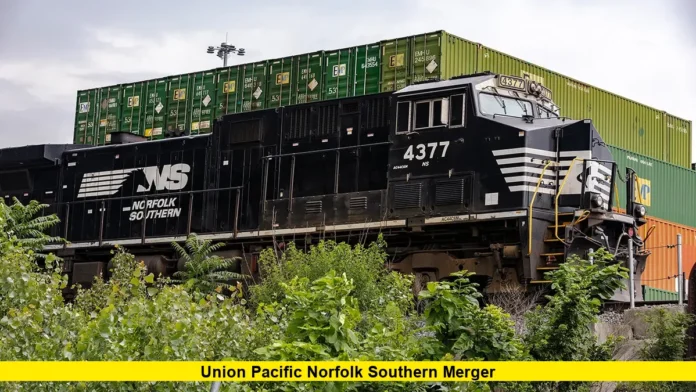The Union Pacific Norfolk Southern merger has officially been announced, with Union Pacific unveiling an $85 billion plan to acquire Norfolk Southern. This agreement—finalized today—marks a turning point for American rail, promising the nation’s first coast-to-coast freight operator and drawing immediate attention from shippers, investors, regulators, and rail workers alike.
Union Pacific, long established across the western United States, will absorb Norfolk Southern’s 19,500-mile eastern network, creating a unified system spanning over 50,000 route miles and 43 states. The combined entity, retaining the Union Pacific name, will be headquartered in Omaha but maintain Norfolk Southern’s Atlanta operations as a core innovation and technology hub.
Merger Details and Value
- Deal Structure: Norfolk Southern shareholders receive one Union Pacific share and $88.82 in cash for each NS share, reflecting a $320 per share offer—an 18-25% premium to recent trading prices.
- Enterprise Value: The merged company will have an enterprise value exceeding $250 billion and projected annual revenue of about $36 billion.
- Synergy Goals: Combined annual synergies are forecast at $2.75 billion by the third year post-close, fueled by both increased revenues and rigorous cost savings.
- Timeline: Both boards have approved the deal. Pending regulatory and shareholder approval, the companies aim to close the transaction by early 2027.
Industry Impact and Strategic Rationale
The merger aims to:
- Streamline national supply chains, enabling direct coast-to-coast shipments without costly interchanges. Expect faster freight times for everything from steel and food products to lumber and automobiles.
- Enhance competitive pressure on long-haul trucking, which has captured market share as rail service reliability fluctuated in recent years.
- Support U.S. manufacturing, with improved network reach and industrial logistics coordination.
“Imagine seamlessly hauling steel from Pittsburgh to California or tomato paste from California to Ohio—this deal makes that possible,” said Union Pacific CEO Jim Vena.
Regulatory Scrutiny and Job Concerns
While the transaction promises efficiency and growth, it also raises concerns:
- Regulatory Hurdles: The deal now enters a lengthy Surface Transportation Board (STB) review. Past rail mergers, like UP’s combination with Southern Pacific in 1996, brought service disruptions and congestion—an experience that regulators are keen to avoid repeating.
- Labor and Competition: Major railroad unions have voiced apprehension about job security and potential service cutbacks. Unions representing over 80% of the future workforce are expected to push for enforceable job protections and service benchmarks during regulatory proceedings.
- Shareholder Reaction: Immediately following the announcement, Union Pacific’s and Norfolk Southern’s shares both dipped, reflecting market caution regarding integration risks and regulatory delays.
Financial Structure and Projections
- Cash and Stock Deal: Funding is a mix of new debt and existing cash, with a targeted debt-to-EBITDA ratio of about 3.3x post-close.
- Operational Performance: The new company projects an operating ratio of 62%, annual EBITDA of $18 billion, and free cash flow topping $7 billion.
- Shareholder Value: Norfolk Southern holders will own roughly 27% of the combined company, gaining long-term exposure to projected growth and efficiency savings.
Looking Ahead
If approved, the Union Pacific Norfolk Southern merger will shape the future of American logistics and supply chains. As regulatory review intensifies and industry stakeholders debate the details, all eyes are on this landmark deal to deliver promised innovation—while safeguarding jobs and maintaining healthy market competition.
Follow this historic story as it evolves, and let us know in the comments: What impact do you think this coast-to-coast railroad merger will have on the nation’s transportation landscape?
